The Butterfly Biosphere at Thanksgiving Point continues the legacy of education. Visitors can adventure in the ‘Costa Rica Climber’ playground, learn more about our small insect friends in the ‘Discovery Zone’, see chrysalis and the release of butterflies into the new tropical conservatory. The experience takes you between macro and micro and asks you to ‘look closer’ at your environment.
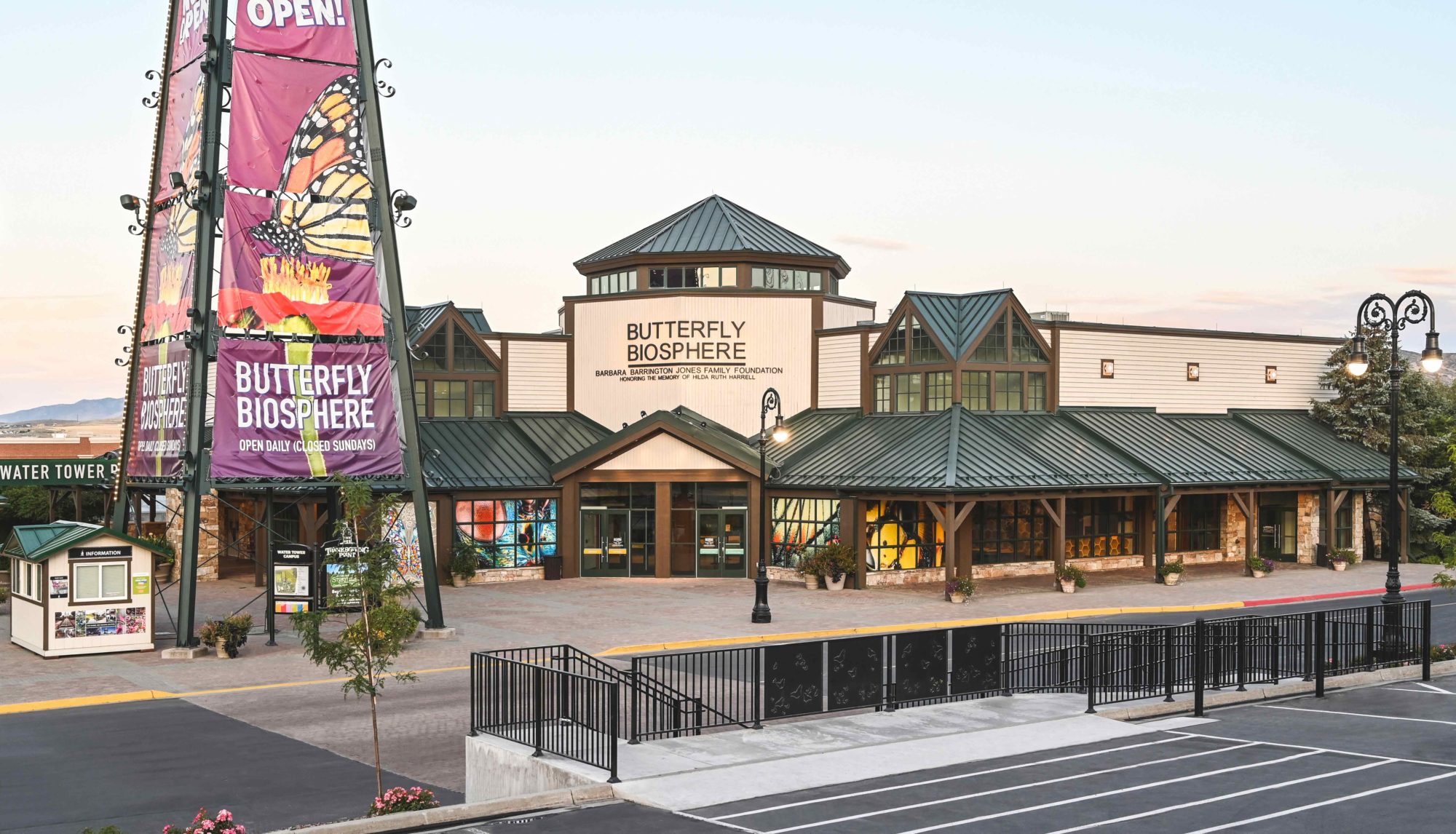
Project Objectives and Goals
Thanksgiving Point has long established itself as a family destination with its well-known exhibits like Museum of Ancient Life and Museum of Natural Curiosity. Recently, Thanksgiving Point experienced significant growth with more residential, office, and retail than ever before. In conjunction with changes in the area, they wanted to refocus their mission of “education in the natural world” and grow their campus of entertainment—this included a transformation of their boutique shopping space to another exhibit. Welcome the newest member of the family, the Butterfly Biosphere. While exploring the five-insect themed exhibits or adventuring in the ‘Cost Rica Climber,’ the goal of the design and graphics was to invite you to “look closer.” From the macro to the micro, bugs may be small, but they make a big impact. The finale of the exhibit is the newly structured glass barn building that transports you to the tropics with its plant life, humidity, and flying friends. The lab allows visitors to observe the life of a butterfly from caterpillar to chrysalis and eventually participate in the hatching and release of butterflies. There is something here for all ages and interests.
Thinking Behind the Design Philosophy for Brilliantly Executed Space
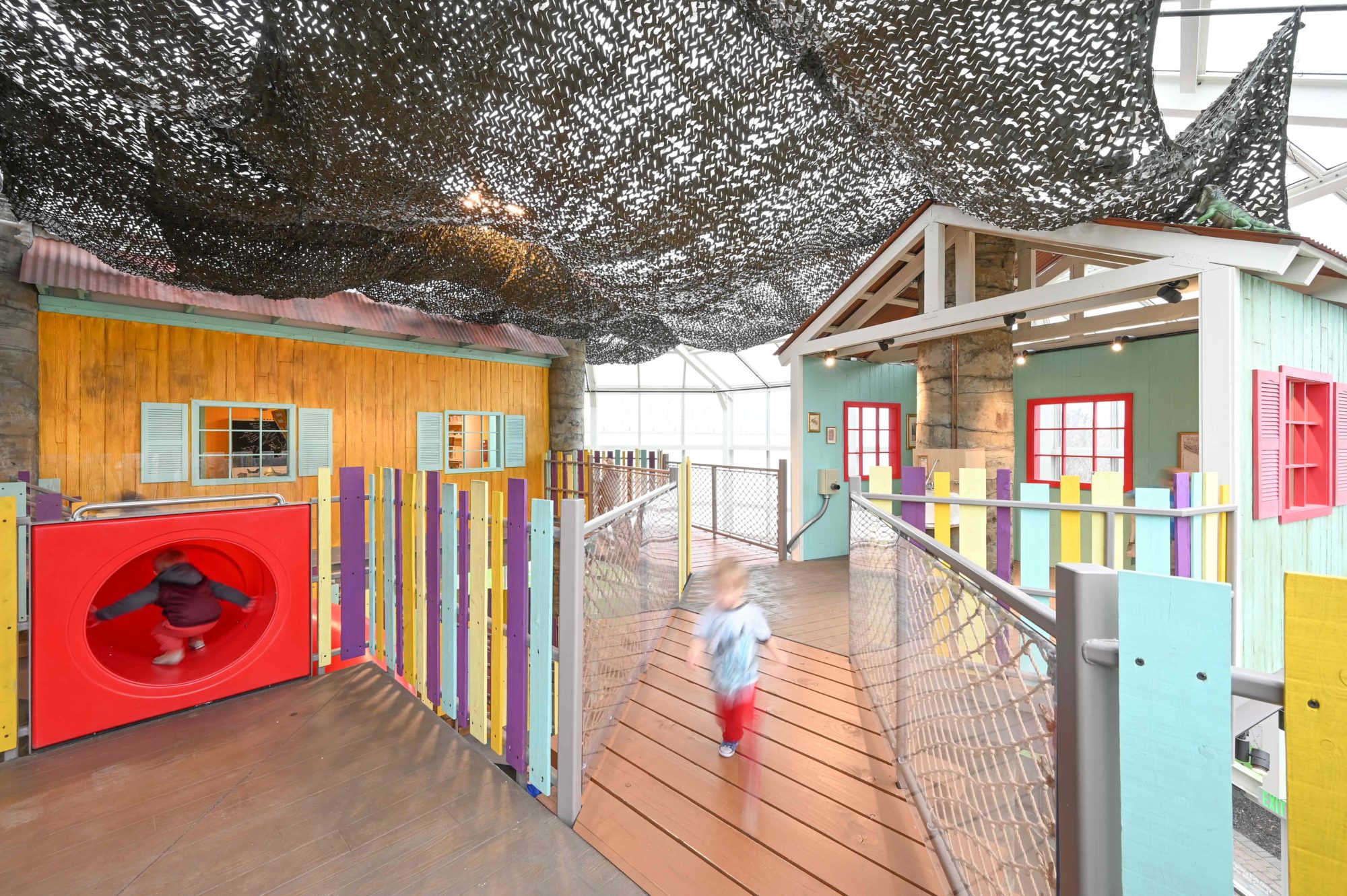
The design team wanted to reduce waste and use the rawest form of materials—steel, wood, concrete, and glass. For seamless continuity, we kept the wood beams and ceiling paneling from the existing space (which is now the reception and ticketing area) and carried that design language into the renovated space for continuity. The ‘Costa Rica Climber’ playground uses concrete ‘wood’ treads to create access rooftop treehouses for research with wood railings and concrete landings. Kids love the swirling slide, trees that talk, and the cave full of treasures. In the ‘Discovery Zone,’ you can experience life as a worm in the cut-out slice of earth.
FFKR’s interior design and graphics team used patterns, shapes, and colors for easy-to-understand wayfinding for all ages. Each of the five insect-themed areas (Beatle, Bee, Ant, Spider, and Butterfly) were assigned a shape, primary and secondary color, and an abstract pattern that was used for corresponding graphics, art, and signage. Using these visual cues with consistently and repetition aids patrons through the space. Following the “look closer” theme, several murals appear to be images of bugs, but at a closer look, the smaller individual ½-inch tiles that form the complete picture.
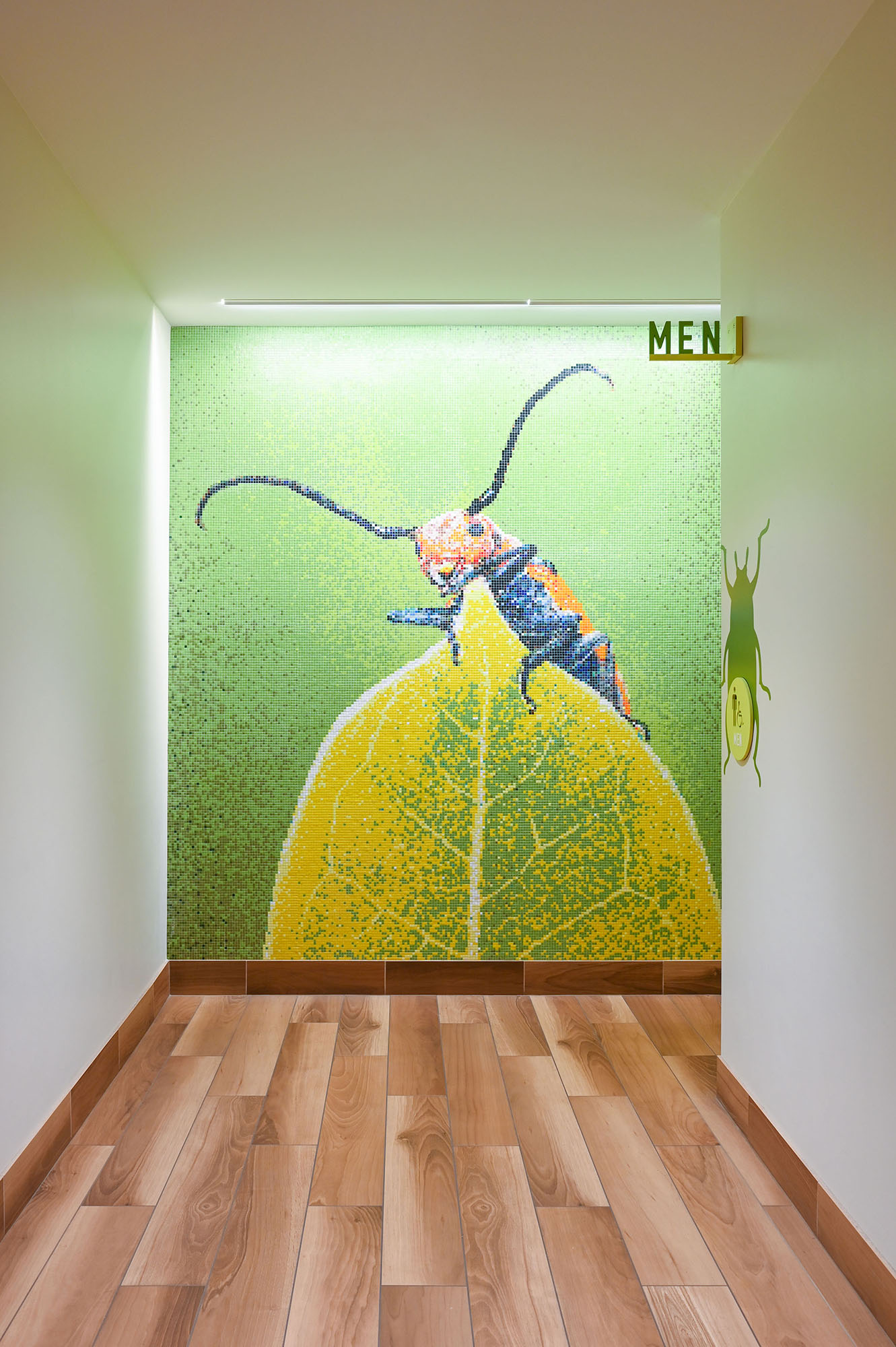
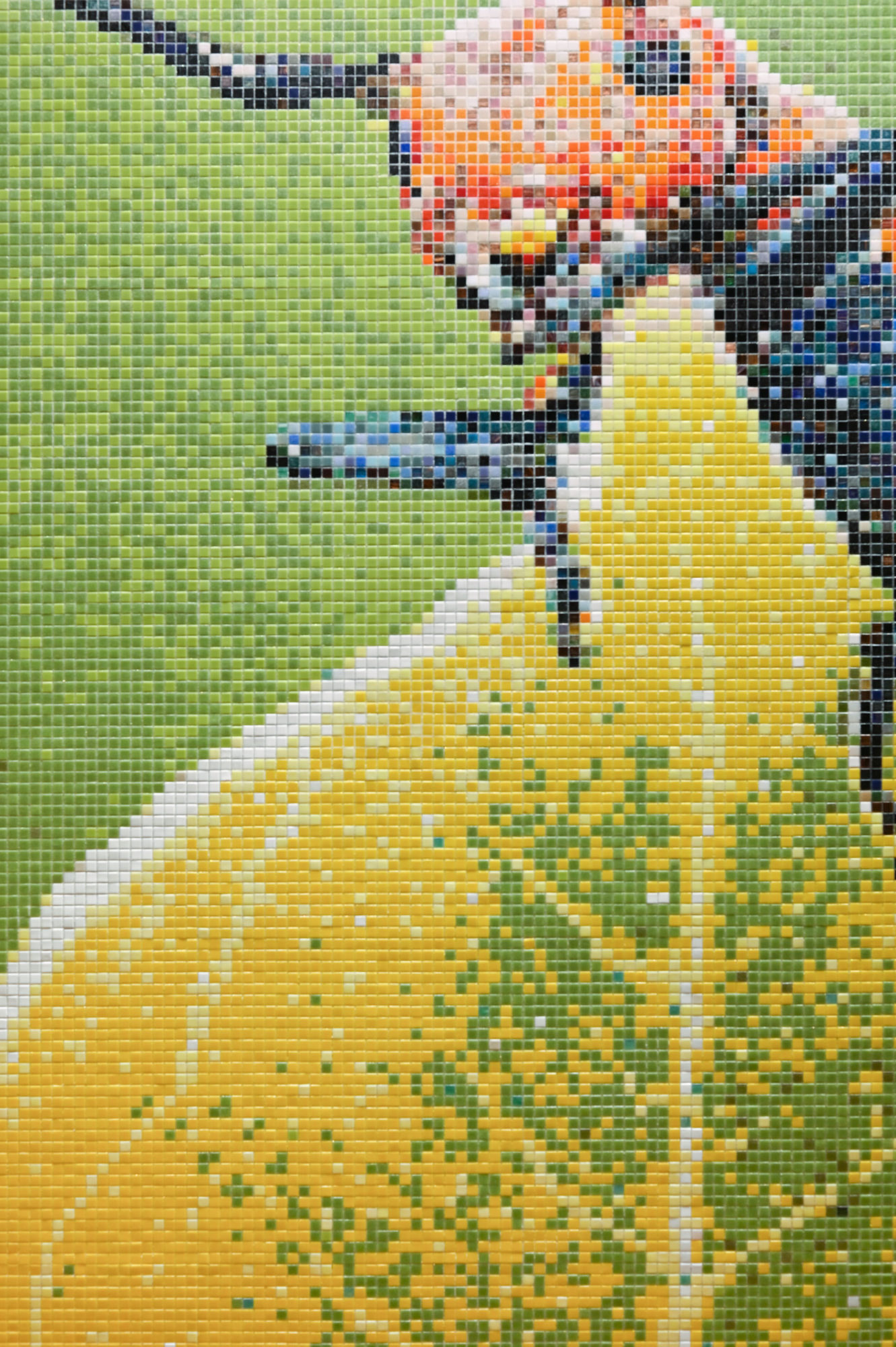
Special Challenges and Creative Solutions
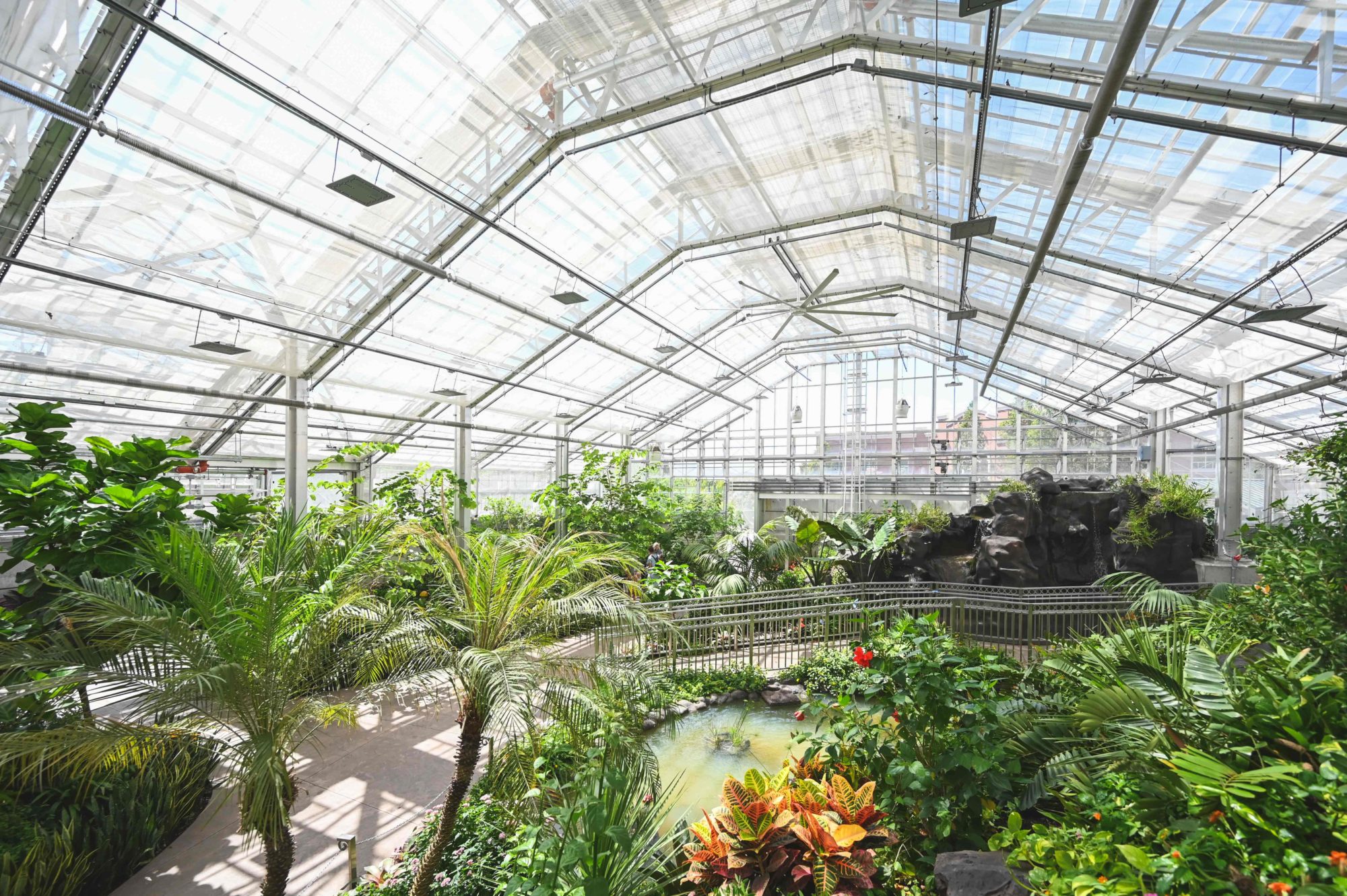
Coordinating with specialty consultants and the contractor, our team met strict specifications by the USDA to limit the infestation and reproduction of over 100 non-native species. Precautions included air barriers between the lab space and any exits, and all exhibits, including the ‘fly zone,’ had to be tested for a completely airtight seal before the release of the insects. To maintain the constant temperature and humidity, atomized misters add moisture to the space through a building environment control system. Roof shading was added to control excessive heat in the summer, and a thin net barrier stops butterflies from reaching the cold glass walls in the winter. With the help of the exhibit consultants, we re-produced a world of the tropics with plants and native-looking geofoam rocks to complete a feel and mood to the environment.
Sustainable and Environmentally Conscious Project
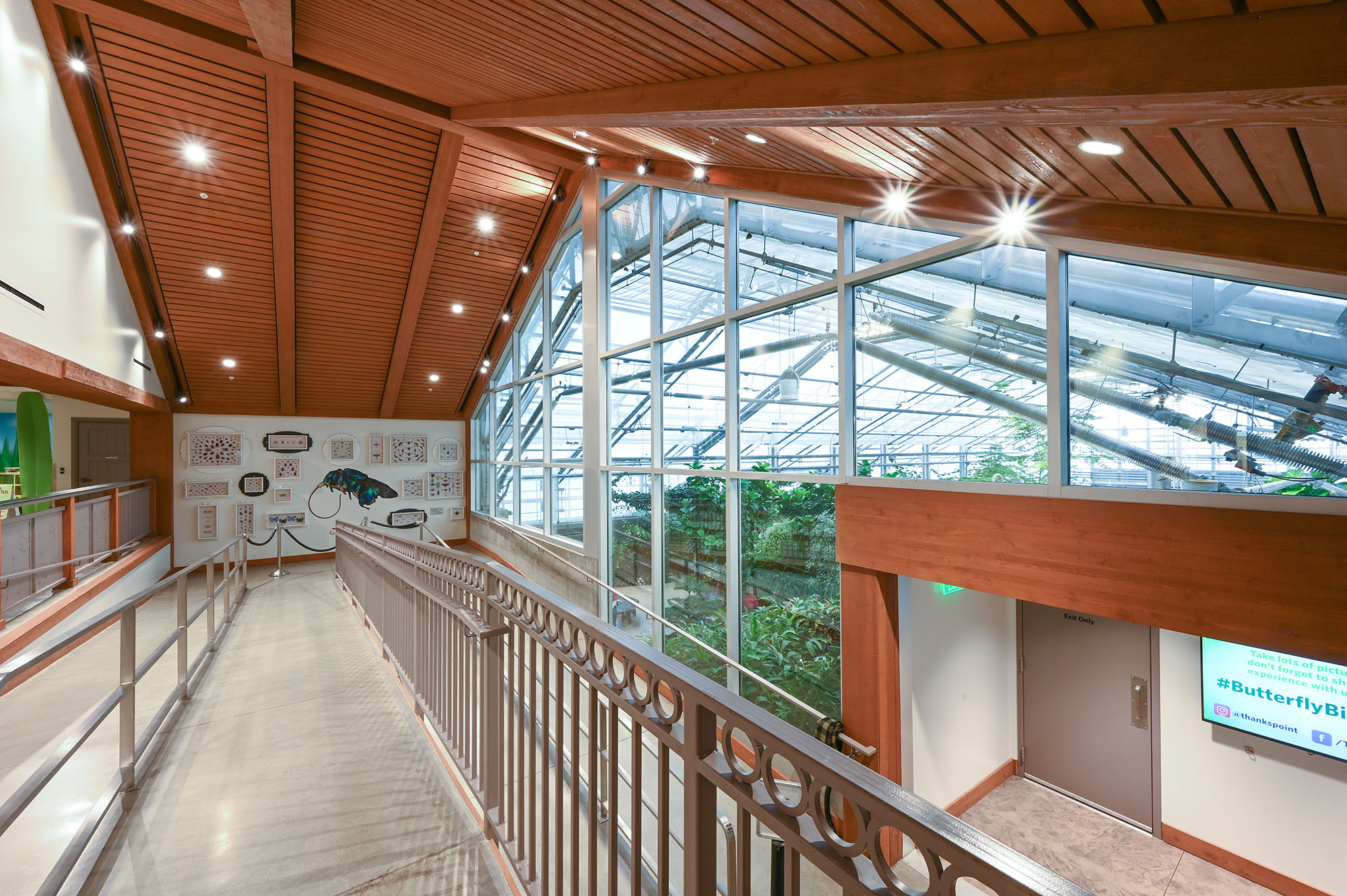
Foremost is that the biosphere is a living, oxygen-producing environment (probably the best air in the valley). The design not only required an entire tropical ecosystem to be created but also created an experience of strolling over rolling hills and past a waterfall to create diverse environments for insects and visitors alike.
During construction, many materials were kept (wood beams and much of the existing core and shell) or repurposed to reduce waste during the remodel. With any upgrade, we incorporate low flow water fixtures and daylighting controls for the LED lights to lower the consumption of water and electricity.
Single pane glass was replaced with insulated glass for the Costa Rica Climber, and the biosphere itself relies upon natural convection with automatic venting and a system of fans to move air and regulate overheating without conditioning the air.
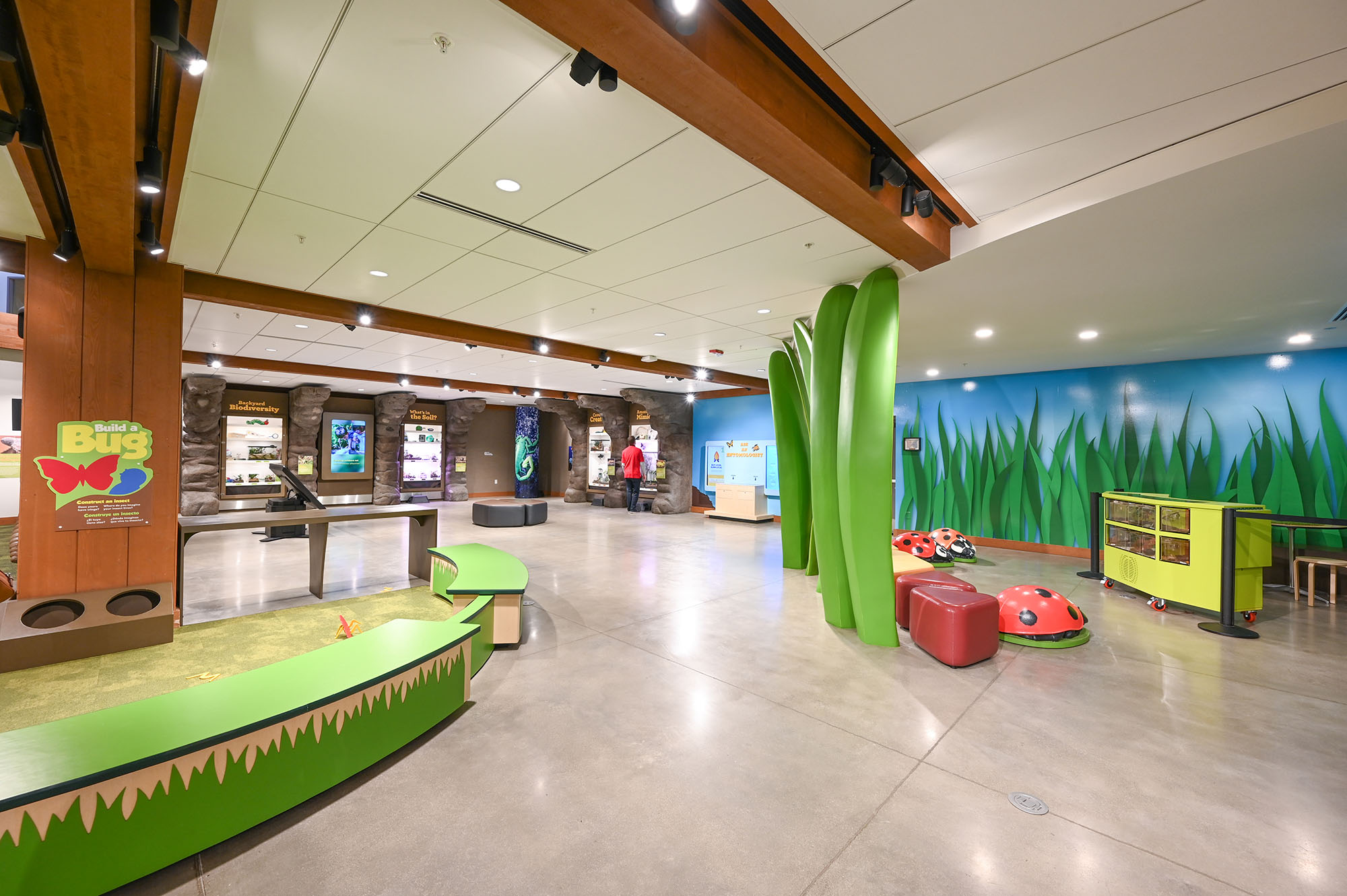
Team Collaboration to Push and Improve the Design
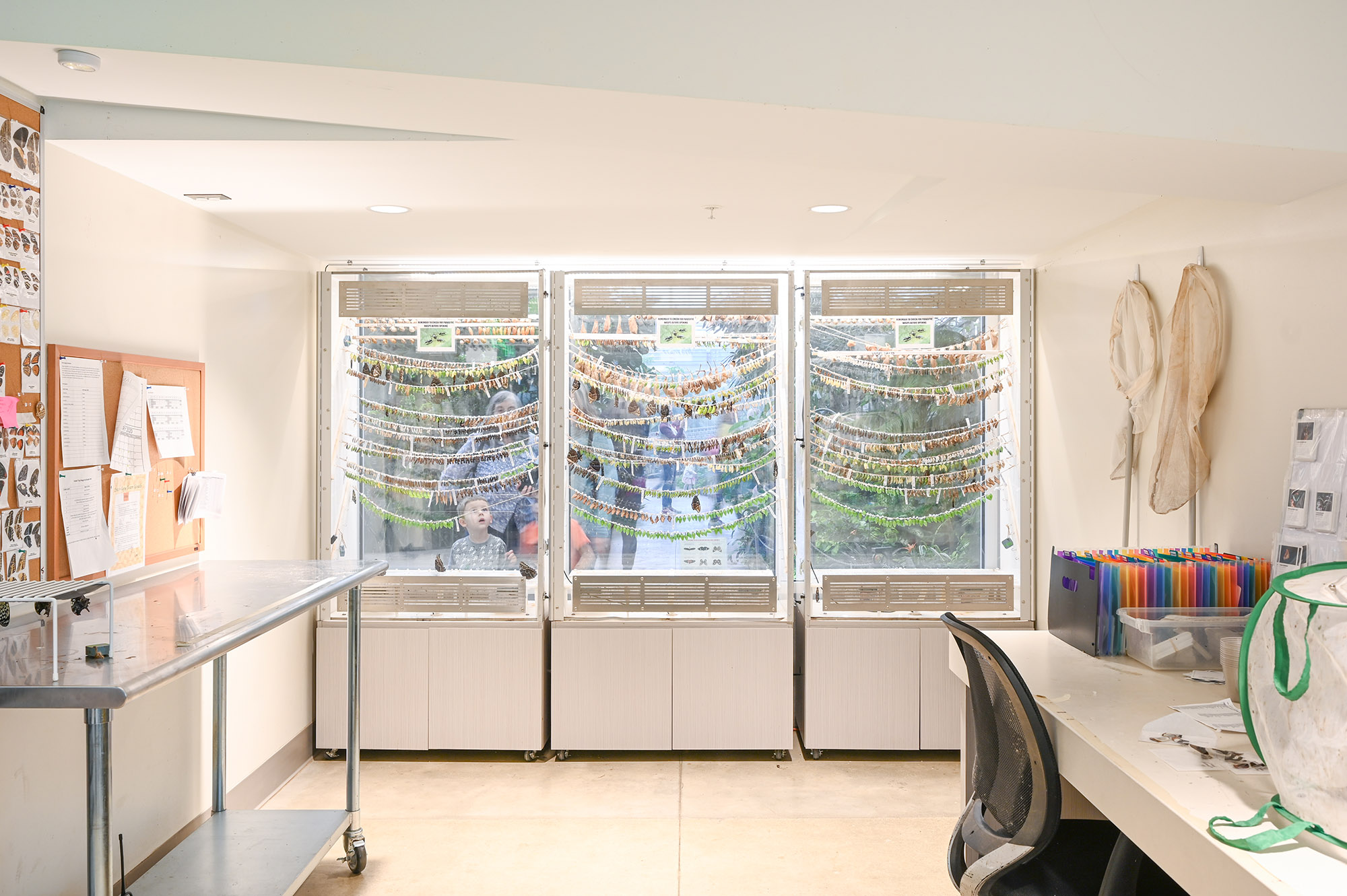
The USDA regulates the purchase, transfer, importation, and life of non-native insects. Therefore, all butterflies are imported in their chrysalis state and hatched. The lab spaces and biosphere ecosystem were coordinated carefully with teams of biologists, and the owner’s in-house entomologist to refine details of the built environment and building systems
Another part of this regulation is that the butterflies cannot propagate and lay their own eggs. To eliminate the possibility, our plant consultant conducted significant research to remove any ‘host plants’ for all the species of butterflies while still selecting native tropical plants correct for the environment. Designing a landscape that promotes healthy plant life and allows for continual flowering is crucial as a food source for the butterflies.
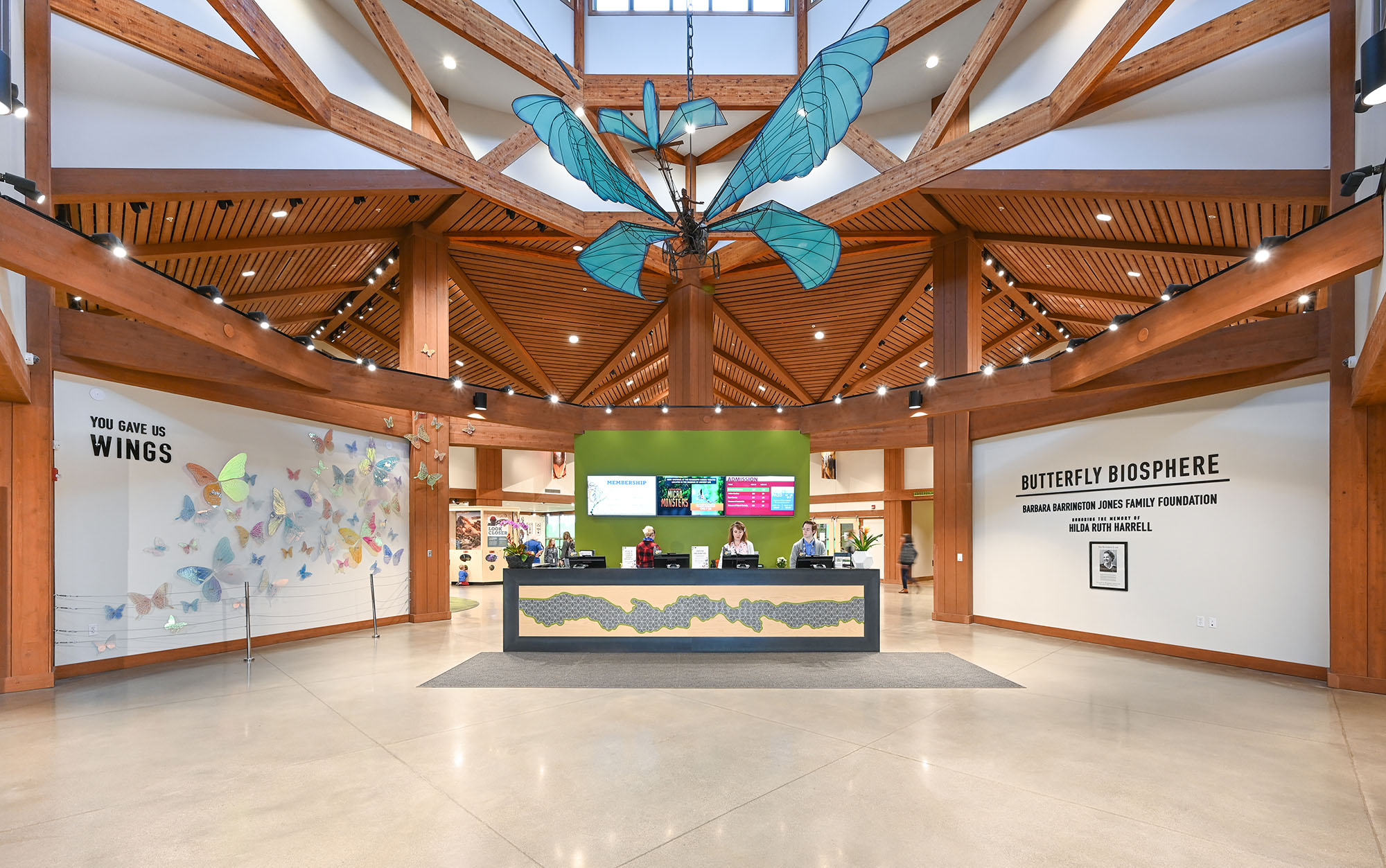
FFKR provided the owner with a concept and direction for the ‘you give us wings’ donor wall in the reception area. The owner then contracted with a local art glass artist and his studio for the production of the iridescent glass butterflies in varying sizes. Additionally, we worked with the owner to release a request for a public art installation to hang over the ticketing desk. After careful review by the team, the current piece was selected.